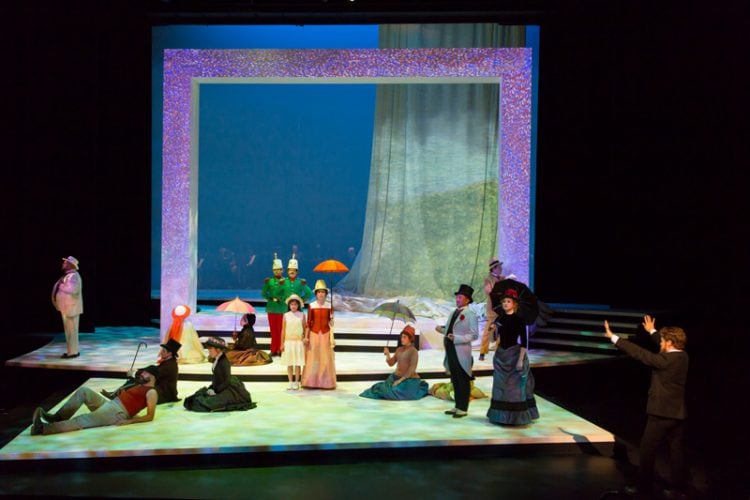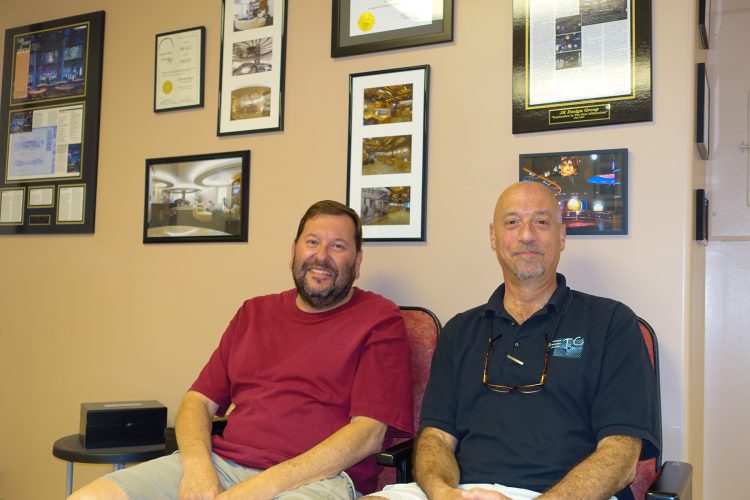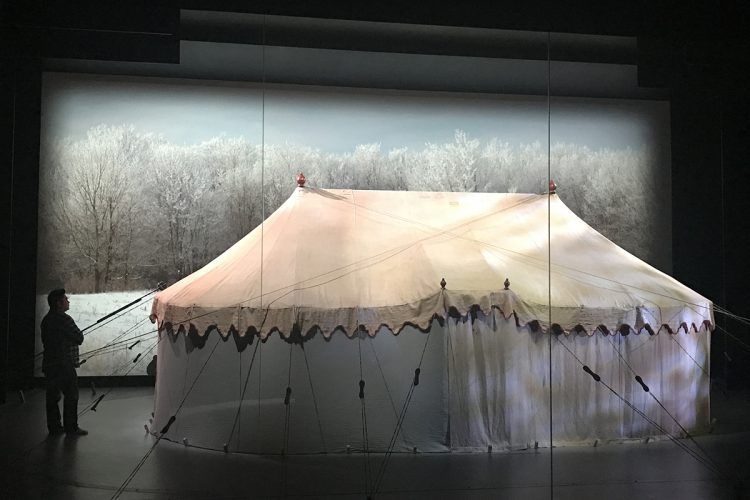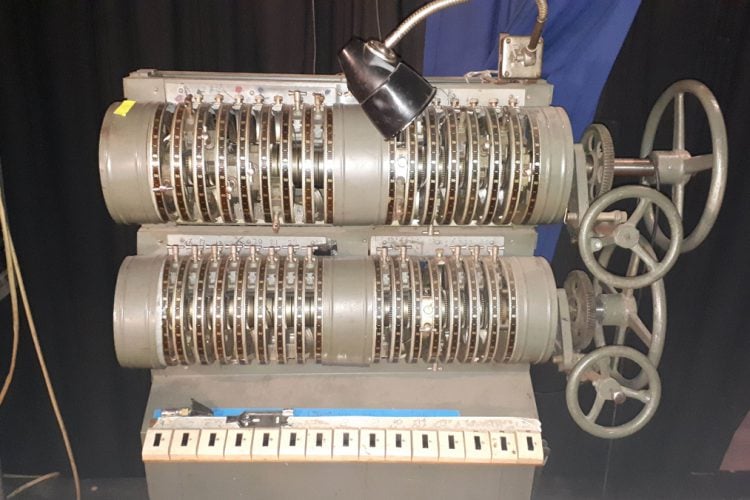There are moments in theatrical lighting when artistic vision is perfectly supported by current technology.
In the Minneapolis Guthrie Theater’s production of Sunday in the Park with George, lighting designer Jane Cox brilliantly recreates the pointillist style of French artist George Seurat, the subject of Stephen Sondheim’s iconic musical. Seurat’s radical and unpopular belief that color and light were seen by the human eye as pixilated images, eerily predates the contemporary LED fixtures that are used to startling effect in Cox’s design. Describing the musical — often considered a heaven-sent gift to a designer — Cox says: “The piece is partly about the relationship of light to color and the physical environment of this musical can be reimagined every time it’s done using the latest lighting and projection technology.”
Director Joseph Haj’s decision to move this complex and intricate work from a traditional proscenium setting to the Wurtele Thrust Stage, created a “wonderful challenge” for Cox and her design team. “Set designer Jan Chambers turned the theater into a huge warm white canvas for Caite Hevner, the projection designer, and I to play on,” says Cox.
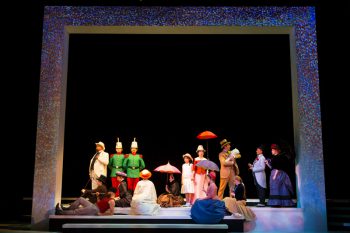
Lighting the light
Cox describes the opening of the show as “a huge Conté crayon sketch book – in whites, grays, and browns building towards the rich, broken-up colored light of his famous paintings by the end of the first Act.” Cox was thrilled to share the same passion for greens and yellows, a trademark of the 19th century French artist.
A comprehensive house rig, designed around a four-instrument coverage of 33 stage areas, was supplemented by 13 ETC Source Four LED Series 2 Lustr fixtures, hundreds of templates, four High End SolaWash 2000’s and two SolaFrame Theatres, to create an infinitely flexible, shifting field of color and patterns of light. Cox was especially impressed by the latest ETC LED fixtures. Used as a downlight and low sidelight system, the Series 2 Lustr fixtures created an ever-changing color world, reminiscent of Seurat’s palette. “I think the Series 2 Lustr is a light Seurat could have gotten very enthusiastic about!” laughs Cox.
Programmed to receive
With 537 cues in a two-hour show, console programmer Angela Vyushkova tested the limits of the ETC Eos console. “The show has enough light cues not to need standbys and once house goes to half, it’s almost a nonstop ride. With 12 moving lights in the rig, another four in set pieces, plus color scrollers and video cues, there are a lot of parts and pieces to direct and calibrate,” says Vyushkova. Choosing from an “overwhelming” set of options, the fixtures were patched into the console using Quick Select Stage Mode and the recently released Color Path option, which can be applied to a fixture on a cue by cue basis, proved indispensable.
Vyushkova used the console’s gel picker to match color in the Wybron Forerunner scrollers and incandescent fixtures. With a bit of tweaking she was able to match the native color of the High End SolaSpots to the rest of the rig. “For every show, I make an interactive Magic Sheet on the Eos that shows me what the moving lights, the color changers, the foggers, et cetera, are supposed to be doing, so I can monitor the rig in a visual way during the show.”
In a production where at times it is impossible to separate lighting from projected video content, it became essential for the lighting console to become the master controller. This led to some creative interfacing with the Dataton Watchout media server from the console. “I MIDI-trigger all the video cues through the Eos, which is outputting DMX data to the media servers, so Jane could adjust the color temperature of the video to match it better to the lighting. We patched the video as generic RGB sources and could easily shift the color content with the encoders. All the content itself, shuttering and alignment, is done through Watchout.” Because RGB gets mapped automatically to encoders, programmers can easily dial in a color or use the color picker to choose one.
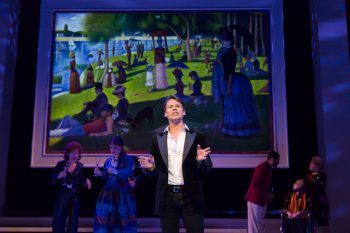
Projecting and connecting the dots
Seurat’s large-scale works went through many revisions as he incorporated sketches of Paris life into the final paintings. Were he working today, he would have been delighted with the ability of media servers to create layers of imagery far beyond the limitations of brush and canvas. Projection designer Caite Hevner spent just over a year creating a tableau of a two-dimensional painting in a thrust configuration. Using a combination of Barco F90 laser projectors and Barco HDX projectors she was able to cover the stage floor and the picture-frame set using “actor friendly” angles. The media server Watchout 6 was used to create a 3D model of the set and theater, with a combination of scenic drafting and venue drafting imported into the software as layers. The resulting animations of dogs and bathers sticking out their tongues produced audible gasps from the audience. They had no idea the effect required about 30 separate 14-inch-by-20-inch sketches of dogs in different positions. Hevner explains the discreet technology behind the fusion of lighting and projection elements. “I realized that we would want color control on the video – to be able to tint the video as Jane tinted the set, to be able to treat video as a color changing light. We decided to link the ETC Eos console to Watchout via DMX input. In Watchout, we built several layers for each surface of the 3D model, specifically designated for lighting to control. We made custom fixture profiles in the Eos for these, with color and intensity channels that were directly changing the color of our content. This allowed for the lighting team to match exact colors and fade times for the video to their lighting cues seamlessly.”
The Guthrie experience – getting it right
Making sure that a theater is more than a pretty face took a mighty collaborative effort. Master electrician Andrew Sullivan, who worked at the older version of the theater (opened in 1963), was a strong voice in making sure that the practical aspects of running a three-stage year-round rep season did not get lost in the architectural mix when the new building opened in 2006. “We had to fight to get our own circuit layout, especially on the thrust stage where we needed a lot more downstage outlets than the architects scheduled,” remembers Sullivan. Other must-haves included “lots of extra three-phase 400- and 200-amp disconnects, and catwalks that I could walk on without crouching.”
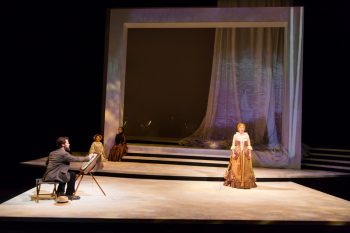
“We are virtually an all-ETC house,” continues Sullivan. “When we reopened in 2006 I spent months just unpacking pallet loads of Source Four fixtures.” He is thankful that the decision was made to create a control network rather than home-run DMX lines. “It was the early days for networking, but we’re glad we did it. The next step is to upgrade our Net2 nodes to Net3.” The original AMX spec was replaced by the current Paradigm system. Sullivan would welcome more Source Four LED Series 2 Lustr fixtures in the next round of purchases, noting: “They are exactly as advertised – once we got the lime color, that changed everything.” The theater’s education program brings Sullivan into contact with lighting students from across the country. “They are too young to remember a pre-Source Four world – soon they won’t recognize a pre-LED world,” he laughs.
The Guthrie has maintained a world-class year-round repertory season and hosted visiting productions from the RSC (Royal Shakespeare Company) and the National Theatre of Great Britain. Sullivan is proud of their repertory work. “The shows get better and better – we are especially pleased with George – the design team did a phenomenal job.”


